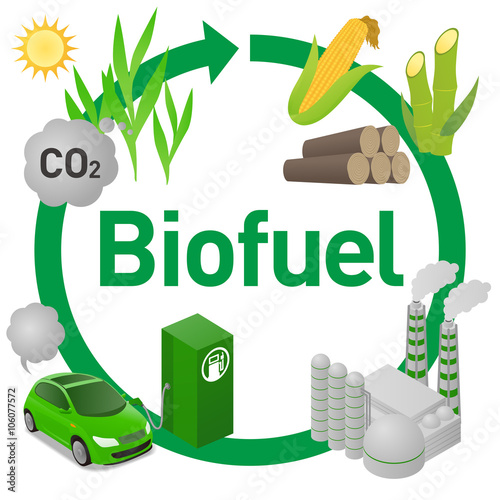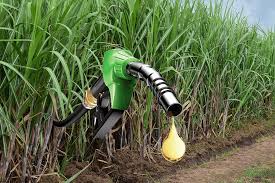Biofuel is any form of fuel that is derived from biomass, which can include plant and algae worn-out material, and animal waste. Biofuels, unlike fossil fuels, are considered being renewable resources of energy, and hence are a better alternative. As for greenhouse transmissions, biofuels may be better or sometimes even worse than fossil fuels. Two very commonly used biofuels include bioethanol and biodiesel.
Now, sugarcane, which is a very abundant crop in India, can produce biofuels. Sugarcane stock has sugar as sucrose, a disaccharide, which can be readily fermented by Saccharomyces cerevisiae to give ethanol, which can be further processed into bioethanol. Sugarcane ethanol is a clean, affordable, and low-carbon biofuel, which is an excellent alternative to fossil fuels. Also, the dry biomass left after the extraction of the juice from sugarcane, which is called bagasse can generate electricity and steam.
As for now, out of the total bioethanol produced in India, 62% comes from sugarcane processing and 38% from maize, rice, and other grains. Under the National Policy on Biofuels – 2018, India has targeted 20% of its total fuel to be bioethanol by the year 2025 (E20). For now, we import most of our biofuel from the United States, and to meet this target, we have to increase our bioethanol production by more than double. Out of the 1-billion-gallon annual demand, it produced only 485 million gallons in our own country in the year 2020.

Brazil was one of the first countries to use sugarcane as an energy crop, producing 23.4 billion litres of bioethanol in 2014 and meeting 15% of the country’s electricity needs. During the current year, Brazil expects to meet 30% of its energy demands (equal to hydropower) from sugarcane. As a result, biofuels are out-competing in the petroleum industry because of their ability to meet future energy needs while also contributing to a safer climate. The usage of biofuel as a fuel source is currently required in the European Union and the United States. By 2020, the EU required that at least 10% of transportation fuel come from renewable sources.
By 2022, they intend to produce 36 billion gallons of biofuel, up from 4.7 billion gallons in 2007. Though non-corn starch feedstock will be the primary source of production. Considering this scenario, Bioenergy and energy can appear to be the most preferred bioethanol sources worldwide.
If we encourage and increase the sugarcane bioethanol production in India, where it is already grown abundantly, it can lead to rural sustainable development, better air quality, create new job opportunities, save import expenses, and even make us a hub for the import of bioethanol, just like Brazil, which recently witnessed the tremendous success of its sugarcane bioethanol industry.
Pranay Mathur

Pranay Mathur is a second-year student at Delhi University studying BSc. (Hons) Environmental Sciences. He is passionate about biodiversity conservation and long-term development. He aspires to be a scholar and is interested about today’s environmental challenges.

